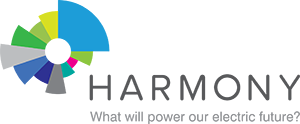
The Harmony programme is a global initiative of the nuclear industry that provides a framework for action, working with key stakeholders so that barriers to growth can be removed.
Why we need Harmony
An increased share of low-carbon sources, as well as a drastically reduced level of fossil fuels, work together in harmony to secure a reliable, affordable and clean future energy supply 24 hours a day.
Access to electricity and clean air are vital needs. Currently one in six people in the world has no access to electricity. As electricity demand continues to rise, greenhouse gas emissions must fall if we are to mitigate climate change and we must switch to cleaner sources to reduce air pollution. This will require large increases of all low-carbon energy sources, of which nuclear is an important part.
Electricity consumption growth in a low-carbon scenario
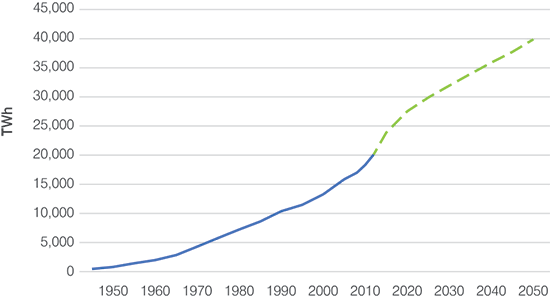
Source: 1945-1979, IEA databases and analysis1980-2012, Energy Information Administration 2013-2050, IEA Energy Technology Perspectives 2015
EA 2°C Scenario: Nuclear to provide a significant contribution to global electricity in 2050
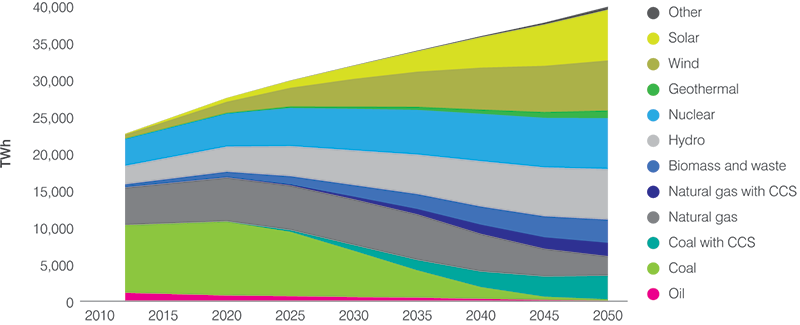
Source: IEA Energy Technology Perspectives 2015
Nuclear: an important part of the energy mix
The international community recognizes the urgent need to decarbonize our electricity generation to protect people and the planet from the dangers of air pollution and climate change.
Nuclear energy is proven, available today and can be expanded quickly, making it an important part of the solution. According to the OECD Nuclear Energy Agency "a mix relying primarily on nuclear is the most cost-effective option to achieve the decarbonization target of 50 gCO2 per kWh."
When considering whole life-cycle emissions, nuclear ranks as one of the best sources of energy.
The IPCC Special Report on Global Warming of 1.5°C concluded that limiting climate change will require global greenhouse gas emissions to start reducing almost immediately.
This will require a faster switch to electricity for energy end use and for that greater electricity demand to be met by low-carbon generation, including nuclear. Nuclear generation increases on average by around 2.5 times by 2050 in the 89 mitigation scenarios considered by the IPCC.
Life-cycle carbon emissions from selected electricity supply technologies
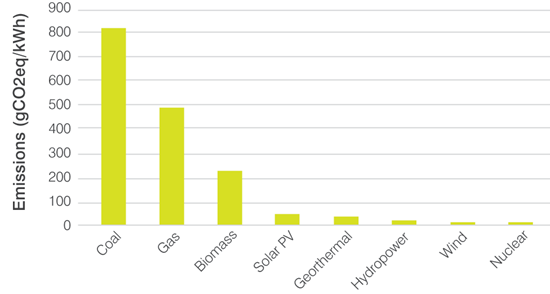
Source: 2014 IPCC, Global warming potential of selected electricity sources
Nuclear power is one of the most cost-effective low-carbon options for generating electricity.
Nuclear generation is a cost-competitive low-carbon generation option. According to the IEA’s World Energy Outlook 2018, the cost of electricity in China from onshore wind, solar PV and offshore wind is respectively 16%, 50% and 140% higher than that from nuclear, even without including the additional costs of adapting the grid and providing back-up generation to compensate for intermittent supply. According to the OECD Nuclear Energy Agency ‘a mix relying primarily on nuclear is the most cost-effective option to achieve the decarbonization target of 50 g CO2 per kWh.'
Levelized cost of electricity ranges (at 7% discount rate)
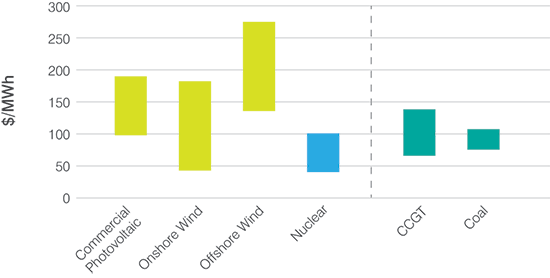
Source: Projected Costs of Generating Electricity - 2015 Edition, International Energy Agency and OECD Nuclear Energy Agency
Nuclear has the lowest energy accident fatalities for OECD countries
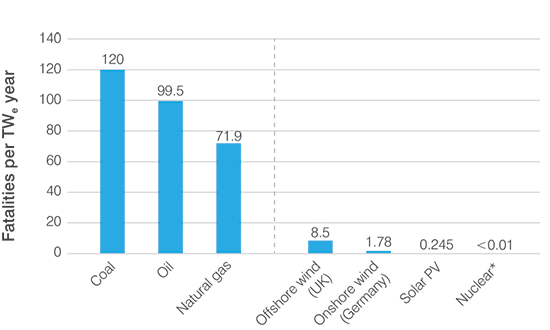
Source: Paul Scherrer Institut. Data for nuclear accidents modified to reflect UNSCEAR findings/recommendations 2012 and NRC SOARCA study 2015
Harmony Goal
Today, with the experience and knowledge it has gained, the nuclear energy industry is in a strong position to deliver on the Harmony goal of generating 25% of electricity before 2050. This is an ambitious target, but the rate at which new reactors will have to be built is no higher than what has been historically achieved.
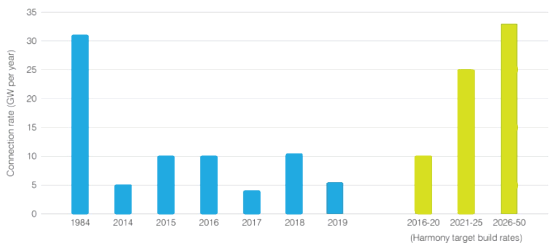
To meet the Harmony goal, we will need to build 1000 GWe of new nuclear capacity by 2050. The average build rate required is:
- 10 GWe per year between 2016 and 2020.
- 25 GWe per year between 2021 and 2025.
- 33 GWe per year between 2026 and 2050.
Creating Harmony
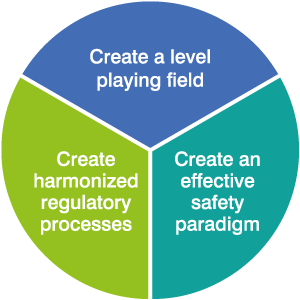
Create a level playing field in energy markets which drives investment in future clean energy. Nuclear energy needs to be recognized for its reliability and should be treated on equal terms as other low-carbon technologies as part of a robust low-carbon mix.
Currently, electricity markets are failing to recognize the full costs and benefits of different forms of electricity generation. Even where carbon pricing is implemented, it does not represent the true long-term costs of climate change. There is no credit given for the reliable, long-term, 24/7 generation supplied by nuclear energy.
Create harmonized regulatory processes to provide a more internationally consistent, efficient and predictable nuclear licensing regime, to facilitate growth of nuclear capacity and timely licensing of innovative designs.
Multiple regulatory barriers from diverse national licensing processes and safety requirements currently limit global civil nuclear trade and investment. A lack of international standardization places unnecessary regulatory burdens on nuclear activities, and delays in the licensing of new designs hinders innovation.
Create an effective safety paradigm focusing on genuine public wellbeing where the health, environmental and safety benefits of nuclear are better understood and valued when compared with other energy sources.
The current energy system fails to consider safety from a holistic societal perspective. The health and environmental benefits of nuclear energy are not valued on an equitable basis with alternative energy sources. The debate fails to take into consideration important factors such as economics, industrial development, societal needs, the environment and public health.
Pathway
Achieving 1000 GWe of new nuclear build by 2050 will require a cooperative effort from the whole nuclear community – industry, research, governments, and regulators – to focus on removing the real barriers to growth.
Harmony provides the framework for action for nuclear energy to deliver its potential. Coordinated by World Nuclear Association, the Harmony programme is identifying the measures that need to be put in place, and getting support from key stakeholders to ultimately deliver a low-carbon future to which nuclear fully contributes.
Join us
If you would like to find out more about Harmony and our industry engagement process please contact harmony2050@world-nuclear.org. World Nuclear Association members can access our engagement packs via the Members Site. If you wish to take part but do not have Members Site access, email harmony2050@world-nuclear.org for a guest login.
Download the Harmony brochure (English)
Download the Harmony brochure (Russian)
Download charts and graphics
Download Harmony presentation
Original update 4 December 2018, latest update 12 March 2019
Harmony What will power our electric future?™ World Nuclear Association

